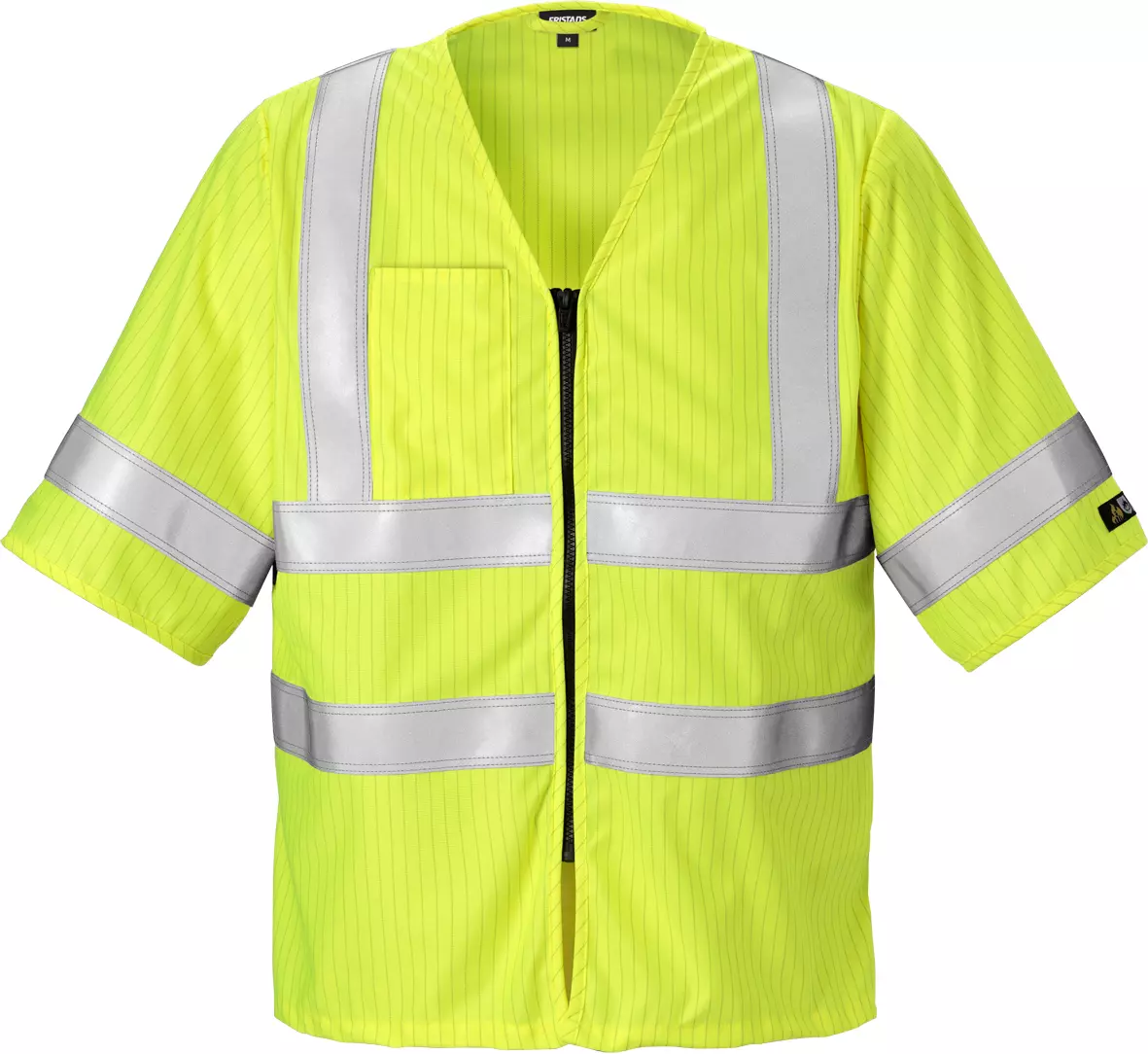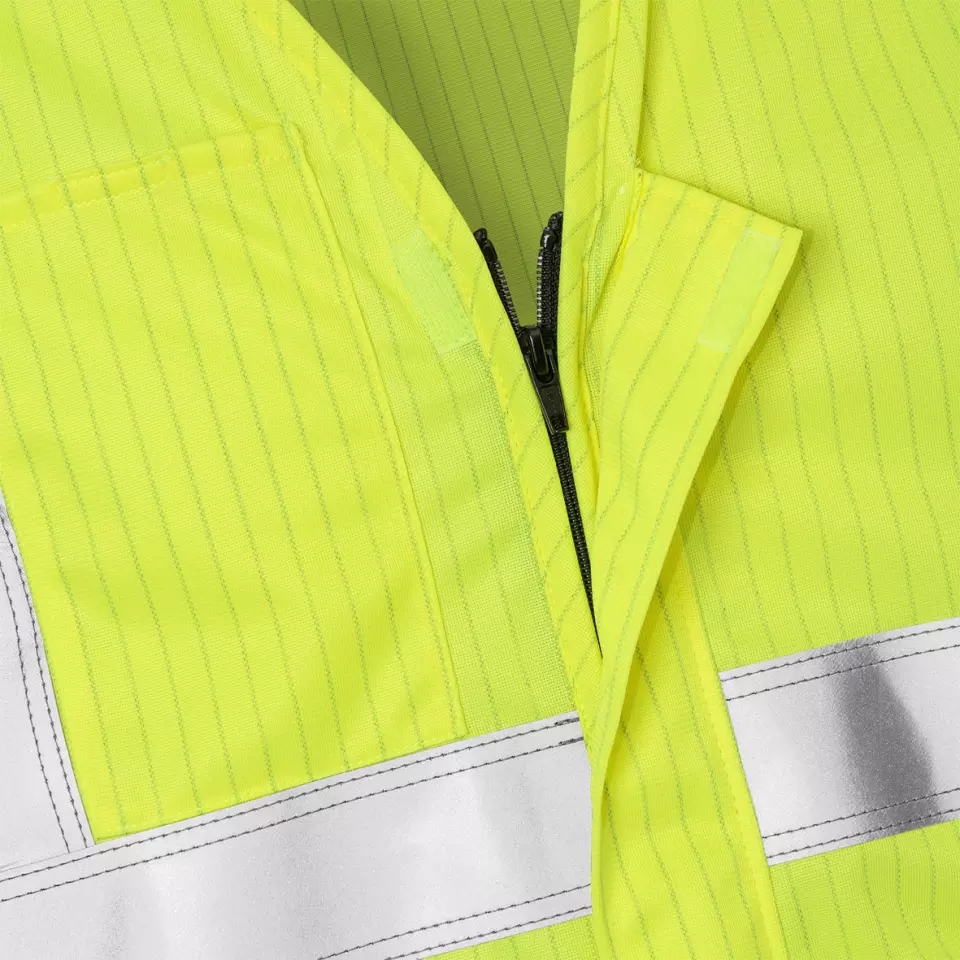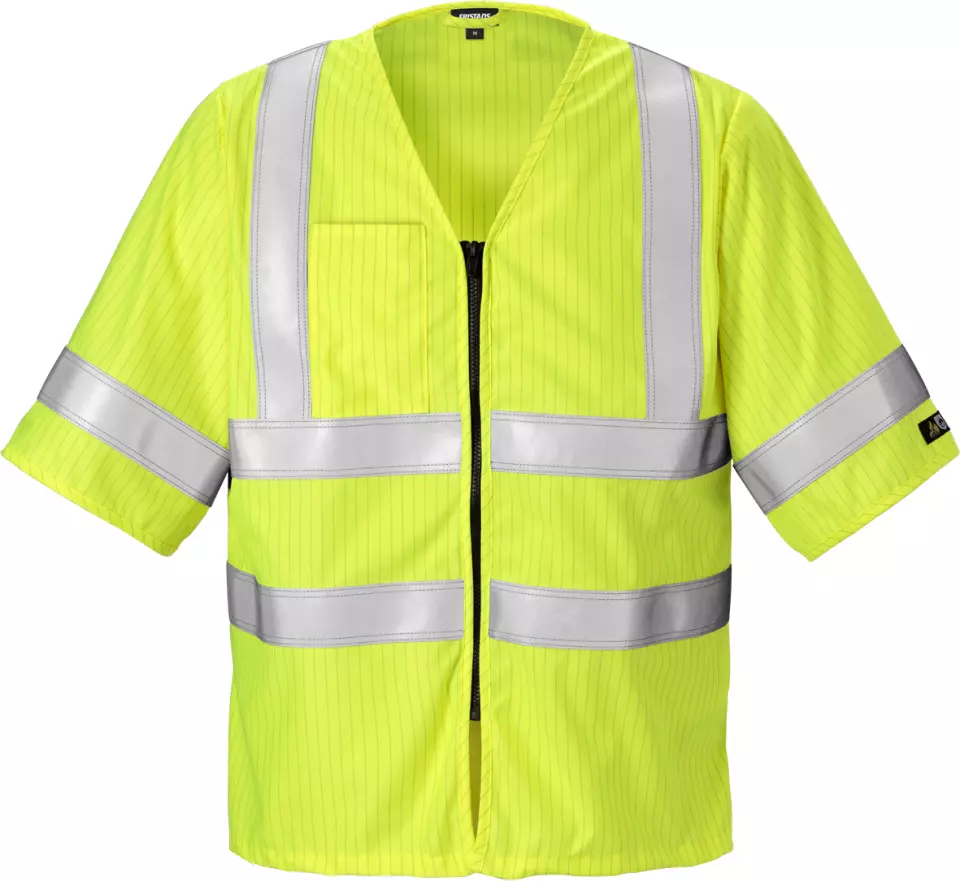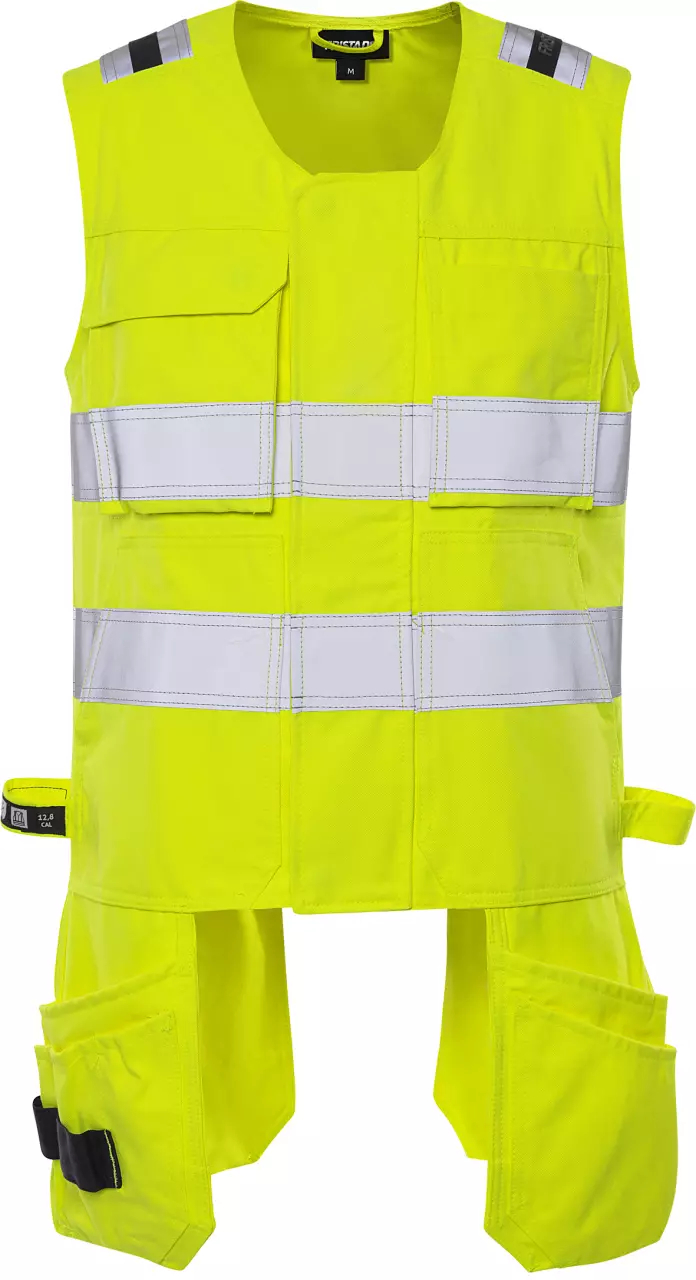


Features You'll Love

Closure Style · Zipper
The method used to fasten the jacket or vest, affecting ease of use, security, and weather protection during work activities.

Material · Polyester, Fabric

EN 1149-3 · Electrostatic Properties Tested
This material is tested to dissipate electrostatic charge. It prevents the build-up of static electricity, avoiding sparks that could ignite flammable materials or damage sensitive electronics. This is crucial for safety in potentially explosive atmospheres.

EN 20471 · Reflective Strip Area Grade 3
Provides the highest level of visibility for high-risk environments, such as working near fast-moving traffic (>60 km/h) or in dark/low light conditions. Garments cover the torso and have reflective strips on sleeves or full-length legs for 360-degree visibility.
Fristads
High vis Flame Retardant Vest Class 3 5023 FHA
High vis Flame Retardant Vest Class 3 5023 FHA
4.8 / 5
96,07 €
Choose size
Out of stock
Free delivery
Features You'll Love

Closure Style · Zipper
The method used to fasten the jacket or vest, affecting ease of use, security, and weather protection during work activities.

Material · Polyester, Fabric

EN 1149-3 · Electrostatic Properties Tested
This material is tested to dissipate electrostatic charge. It prevents the build-up of static electricity, avoiding sparks that could ignite flammable materials or damage sensitive electronics. This is crucial for safety in potentially explosive atmospheres.

EN 20471 · Reflective Strip Area Grade 3
Provides the highest level of visibility for high-risk environments, such as working near fast-moving traffic (>60 km/h) or in dark/low light conditions. Garments cover the torso and have reflective strips on sleeves or full-length legs for 360-degree visibility.
Product description
Flame retardant high vis vest provides reliable protection from heat and flames as well as excellent visibility in demanding work environments. Lightweight 120 g/m² construction combines flame retardant polyester and antistatic fibers to achieve optimal performance. The vest is designed to be worn over EN ISO 11612 compliant garments and is approved for ATEX environments.
Product features:
- Front with zipper
- Chest pocket with hook and loop fastening
- Worn over EN ISO 11612 compliant garments
- Approved for ATEX environments
- ÖKO-TEX® certified
Technical specifications:
- Material composition: 98% flame retardant polyester, 2% antistatic fibers
- Weight: 120 g/m²
- Protection from heat and flames
- Antistatic
- Lightweight
Standards:
- EN 1149-5 – Electrostatic properties
- EN ISO 14116 Index 1 – Heat and flame retardant properties, limited flame spread
- EN ISO 20471 Class 3 – Visibility
- EN 1149-3 material approval

